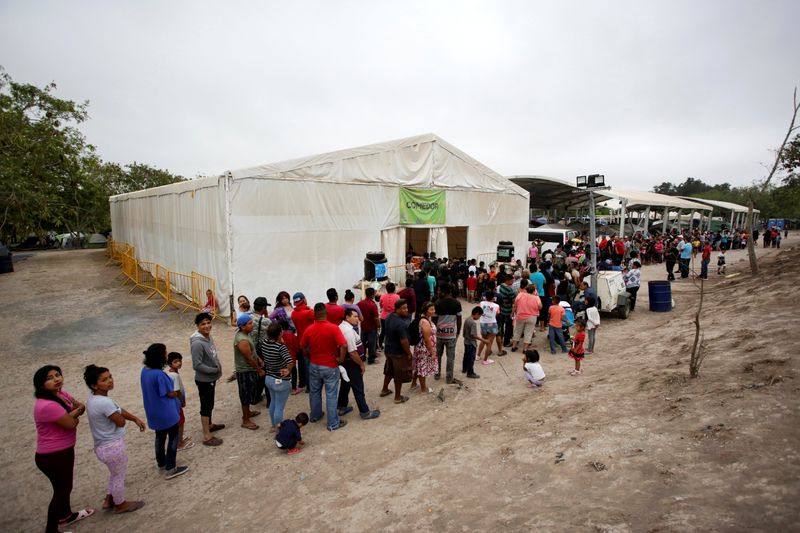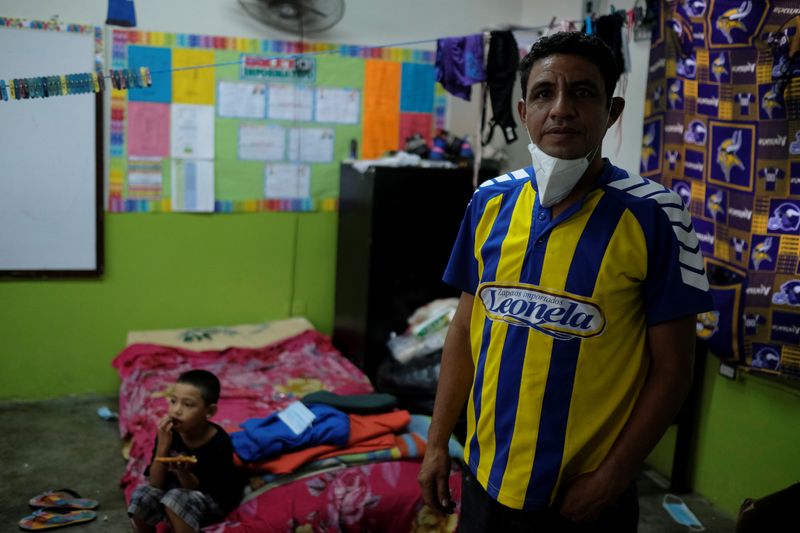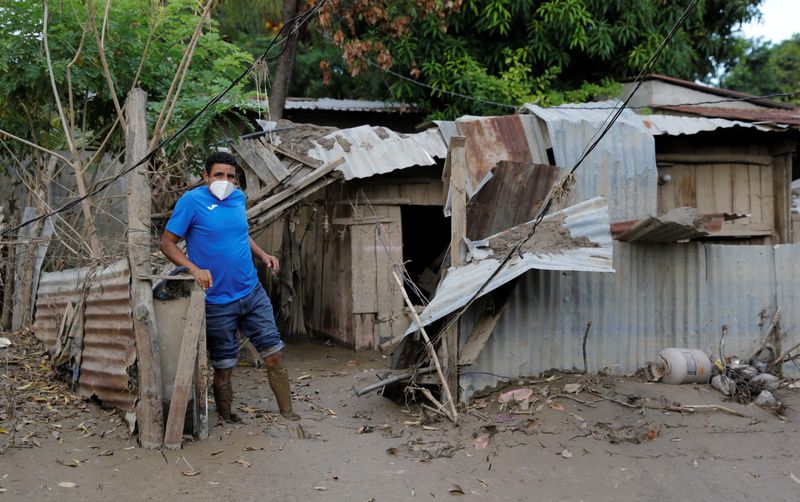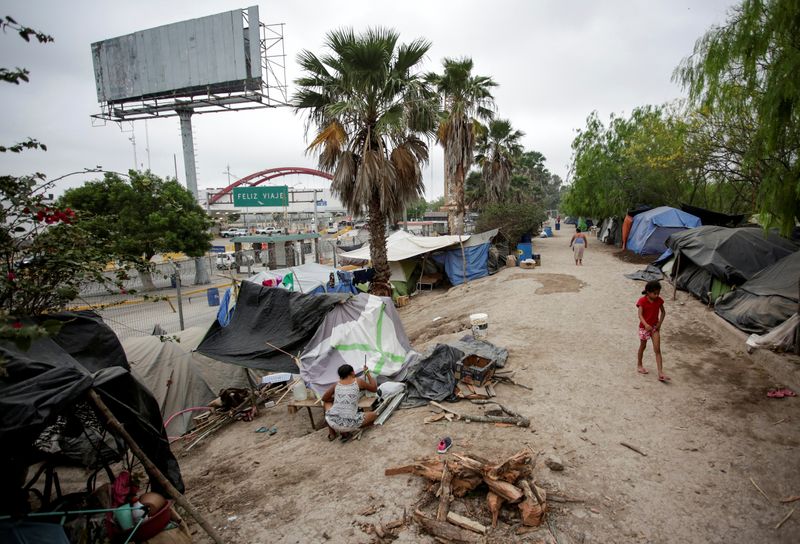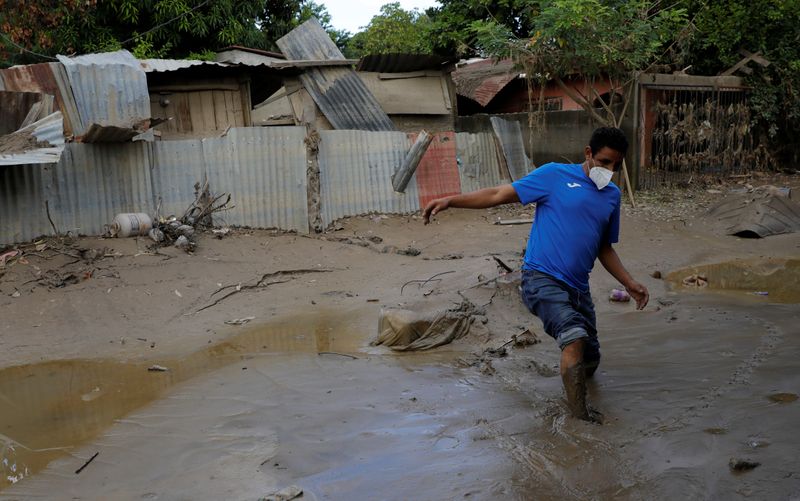LOS ANGELES/MONTERREY, Mexico (Reuters) – After spending eight months of 2019 in a makeshift tent camp in the dangerous Mexican border city of Matamoros, Israel Martinez abandoned his hopes of seeking asylum in the United States.
Beaten down by the cold and unsanitary conditions in the encampment, Martinez accepted a free flight back to his homeland of Honduras in January 2020.
Last month, his house was severely damaged by flooding during back-to-back hurricanes. And in January, U.S. President-elect Joe Biden, who has promised to relax some immigration restrictions at the U.S.-Mexico border, takes power. Those factors have prompted Martinez and others to start making plans to return.
Thousands of newly hopeful migrants in Central America have recently joined WhatsApp and Facebook groups dedicated to organizing northbound caravans, slated to begin leaving the region in the coming weeks. Biden’s Jan. 20 inauguration is a frequent topic. “Remember, Trump leaves on the 20th,” one person wrote in a group planning to leave Honduras on Jan. 15. “If people arrive before then, they’ll have problems.”
U.S. border officials and shelter directors along the border are concerned about the effects of a major surge in migration in the middle of the coronavirus pandemic, as is the Biden transition team, people familiar with the team’s discussions said.
A new wave of migrants could create an early crisis for the incoming administration as it seeks to fulfill campaign promises to roll back the harsh policies of U.S. President Donald Trump, while still deterring unregulated travel across the southern border.
Reuters spoke with seven shelter organizations, including three of the country’s largest, in Texas, Arizona, New Mexico and California. Many said they wanted Trump’s policies to be reversed as quickly and safely as possible, but feared pandemic-related factors – including reduced shelter capacity, fewer volunteers and medical workers, a lack of government testing of migrants, and fewer donations – would make it difficult for them to cope with a surge without additional resources.
The Biden campaign website says the new administration will “dramatically increase U.S. government resources to support migrants awaiting assessment of their asylum claims and to the organizations providing for their needs.”
The Biden transition team has been meeting with advocates to listen to suggestions for how to cope with a surge, a source familiar with the discussions told Reuters. Migrant advocates interviewed by Reuters said they have yet to receive concrete commitments from incoming officials.
Biden has promised “on day one” of his administration to end the Migrant Protection Protocols, or MPP, the controversial Trump program implemented in 2019 that forced Martinez and tens of thousands of other asylum seekers to wait in Mexico pending U.S. immigration court hearings.
The Biden transition has not yet said if it plans to repeal a separate COVID-19-related order put in place by the U.S Centers for Disease Control and Prevention in March that allows U.S. authorities to quickly expel almost all border crossers.
On a call with reporters on Monday, U.S. Customs and Border Protection Acting Commissioner Mark Morgan said immediately reversing Trump’s policies on the border would lead to a “full-blown crisis in a couple of weeks.”
Three people familiar with discussions among Biden transition officials, who spoke on condition of anonymity, told Reuters that the team recognizes the importance of implementing an orderly process to dismantle MPP to avoid any rush to the border and said unraveling the program will take time.
Another person familiar with the issue said public health concerns regarding the coronavirus will be a key factor in planning how fast to proceed.
VOLUNTEERS ‘DRAMATICALLY REDUCED’
El Paso, Texas-based Annunciation House, one of the country’s largest shelter organizations, took in around 150,000 people from U.S. immigration authorities in fiscal year 2019, director Ruben Garcia said. As many as 1,000 people arrived at its facilities each day during peak times that spring, he said, requiring a “Herculean effort” to respond.
Annunciation House mobilized thousands of volunteers and enlisted churches as makeshift shelters and rented hotel rooms in blocks. Now, Garcia said, “We’re running into the reality that people are saying, ‘Ruben, in this pandemic, there’s just a lot of people who aren’t going to want to help.'” He is facing reluctance from overflow spaces while his own shelters have reduced capacity due to the virus.
Many of Annunciation House’s short-term volunteers are older retirees who are more vulnerable to the coronavirus. At the same time, as the pandemic has hurt jobs and incomes, donations have dropped off. The organization does not receive government support for its work.
Teresa Cavendish, director of the Casa Alitas program that runs a large shelter in Tucson, Arizona, said COVID-19 had “dramatically reduced” the organization’s active roster of 400 volunteers and 150 medical providers because many are vulnerable to the coronavirus, or now have other commitments.
For example, the shelter’s main doctor is now running a COVID-19 ward in a Tucson hospital, she said. The organization has also seen financial donations drop by 75-80%.
Michael Smith, director of The Holding Institute in Laredo, Texas, which helps migrants as well as the local community, said his shelter had lost many volunteers and been forced to introduce new pandemic-related restrictions that have halved its bed capacity.
Donations have also fallen because “in Zoom church, you can’t pass the plate,” he said. He has cut weekly community food distributions from 30 pounds to 25 per household in an effort to stretch resources, and is now shopping online for “backup plan” camping tents in case arriving migrants need to sleep outside.
‘NOWHERE TO LIVE’
Garcia, the Annunciation House director, said he wished migrants would “stay put” for a few months as the coronavirus vaccine is rolled out. “It’s going to add an element of manageability that is going to be desperately needed,” he said.
But back in Central America, migrants like Israel Martinez say they cannot wait.
“Look at how sad this is,” Martinez said in a video shot on his cellphone for Reuters as he waded through the streets of his San Pedro Sula neighborhood, still filled with ankle-deep water more than two weeks after the second hurricane made landfall.
The first time he left Honduras, Martinez said, he was fleeing threats from a ruling party politician, who had threatened to jail him for working for the opposition.
Now, with his neighborhood in ruins and shelters for storm victims at capacity, his reasons are simpler.
“I have nowhere to live,” he said in a phone call from an elementary school where he is sleeping with his wife and their six children, aged six to 21. The family is planning to leave for the United States in the first week of January, just before Biden takes office.
(Reporting by Mimi Dwyer in Los Angeles, Laura Gottesdiener in Monterrey, Mexico and Ted Hesson in Washington; Editing by Mica Rosenberg, Ross Colvin and Rosalba O’Brien)

